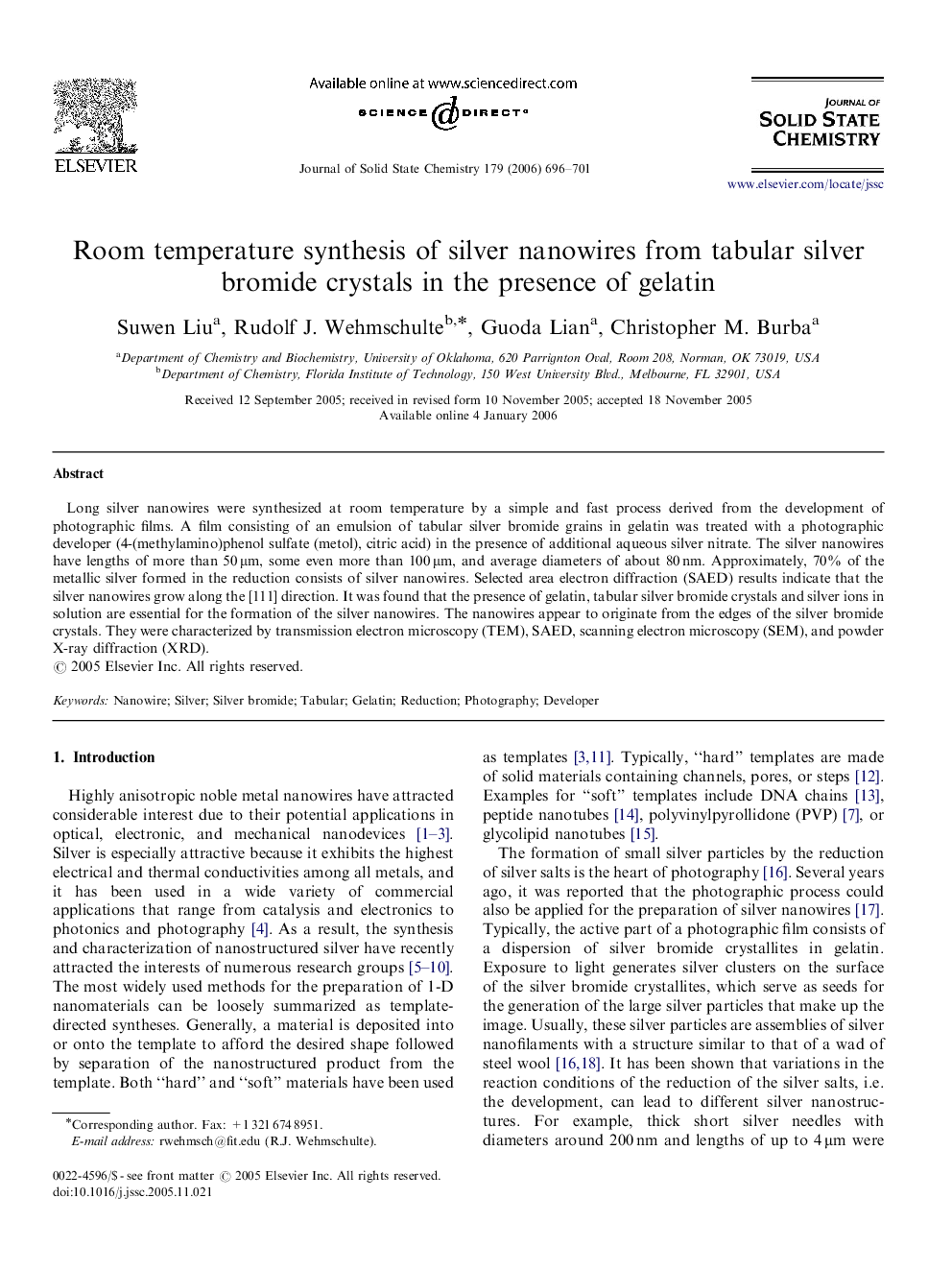| Article ID | Journal | Published Year | Pages | File Type |
|---|---|---|---|---|
| 1331942 | Journal of Solid State Chemistry | 2006 | 6 Pages |
Long silver nanowires were synthesized at room temperature by a simple and fast process derived from the development of photographic films. A film consisting of an emulsion of tabular silver bromide grains in gelatin was treated with a photographic developer (4-(methylamino)phenol sulfate (metol), citric acid) in the presence of additional aqueous silver nitrate. The silver nanowires have lengths of more than 50 μm, some even more than 100 μm, and average diameters of about 80 nm. Approximately, 70% of the metallic silver formed in the reduction consists of silver nanowires. Selected area electron diffraction (SAED) results indicate that the silver nanowires grow along the [111] direction. It was found that the presence of gelatin, tabular silver bromide crystals and silver ions in solution are essential for the formation of the silver nanowires. The nanowires appear to originate from the edges of the silver bromide crystals. They were characterized by transmission electron microscopy (TEM), SAED, scanning electron microscopy (SEM), and powder X-ray diffraction (XRD).
Graphical abstractLong (100 μm or more) silver nanowires have been obtained at room temperature within 10–15 min using a procedure closely related to photographic film development.Figure optionsDownload full-size imageDownload as PowerPoint slide
